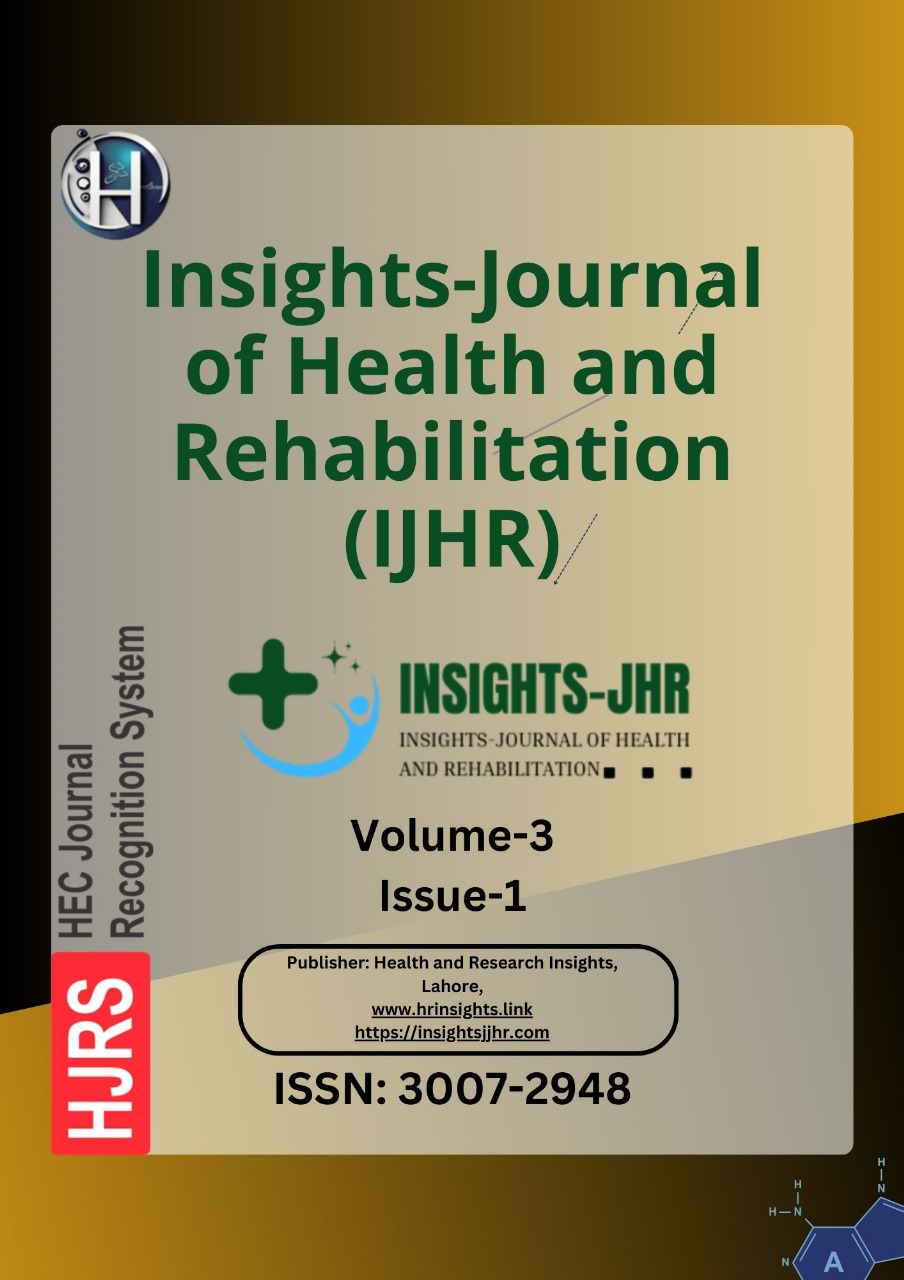ASSESS THE LEVEL OF DEPRESSION, ANXIETY, AND STRESS AMONG UNDERGRADUATE PUBLIC NURSING STUDENTS, PAKISTAN
DOI:
https://doi.org/10.71000/8ts73964Keywords:
Anxiety, Depression, DASS-21 Scale, Mental Health, Nursing Students, Psychological Stress, Undergraduate EducationAbstract
Background: Anxiety disorders are psychological conditions characterized by excessive worry, heightened arousal, and fear, while stress impairs cognitive functions such as focus, decision-making, and problem-solving. High levels of psychological distress can negatively affect students’ academic performance and overall well-being, leading to poor health outcomes, including an increased risk of metabolic syndrome and cardiovascular diseases. Nursing students are particularly susceptible due to the dual demands of academic and clinical responsibilities.
Objective: This study aimed to assess the levels of depression, anxiety, and stress among undergraduate public nursing students in Sindh, Pakistan.
Methods: A cross-sectional survey was conducted from December 25, 2025, to January 25, 2025, across three public nursing colleges: College of Nursing (CON) Female Shikarpur, CON Male Jacobabad, and CON Female Sukkur. A total of 170 students participated, with the sample size calculated using OpenEpi at a 95% confidence interval and a 5% margin of error. A convenience sampling method was used. Data were collected using a structured questionnaire based on the DASS-21 scale, comprising demographic information and three subscales for depression, anxiety, and stress. Data analysis was performed using SPSS version 29, with descriptive statistics, including frequencies and percentages.
Results: Among the participants, 29.41% (n=50) were male, and 70.5% (n=120) were female. Age distribution revealed 17.64% (n=30) were under 20 years, 72.94% (n=124) were aged 20–25, and 9.41% (n=16) were above 25. Anxiety levels showed 55.28% (n=94) in the normal range, 12.94% (n=22) mild, 19.41% (n=33) moderate, and 12.35% (n=21) severe. In terms of stress, 90.58% (n=154) were classified as normal, 7.05% (n=12) mild, 2.35% (n=4) moderate, and 5.29% (n=9) severe. Depression levels were normal in 69.4% (n=118), mild in 17.05% (n=29), moderate in 13.52% (n=23), and no participants reported severe depression.
Conclusion: The study findings indicate a significant prevalence of anxiety, stress, and depression among nursing students, with female students appearing more susceptible to psychological distress. These results highlight the need for universities to strengthen mental health resources and implement targeted interventions, particularly for female students, to improve their psychological well-being and academic performance.
Downloads
Published
Issue
Section
License
Copyright (c) 2025 Abdul Sami Awan, Farha Brohi, Hina Buriro, Maria Soomro, Bakhtawar Sarki (Author)

This work is licensed under a Creative Commons Attribution-NonCommercial-NoDerivatives 4.0 International License.







